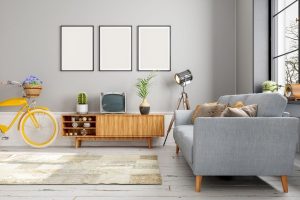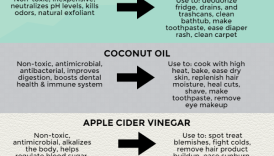Incorporating Sustainable and Eco-Friendly Décor into Your Home

Importance of Sustainable Decor
In today’s world, the importance of sustainable decor has never been more apparent. As consumers become increasingly aware of environmental issues, the demand for products that support sustainability has surged. Sustainable decor not only enhances the aesthetic of a home but also reflects a conscious lifestyle choice, demonstrating care for the planet. It’s a meaningful way to express individuality while contributing to a larger cause.
- Incorporating Sustainable and Eco-Friendly Décor into Your Home
- Importance of Sustainable Decor
- Benefits of Eco-Friendly Home Decor
- Assessing Your Current Decor
- Evaluating Environmental Impact
- Identifying Areas for Improvement
- Choosing Sustainable Materials
- Recycled and Upcycled Furniture
- Organic Fabrics and Textiles
- Eco-Friendly Lighting Options
- Energy-Efficient Light Bulbs
- Natural Light Utilization
- Indoor Plants and Sustainable Greenery
- Air-Purifying Plant Selection
- Vertical Gardens and Living Walls
- Sustainable Painting and Finishes
- Low VOC Paints and Sealants
- Eco-Friendly Wallpaper and Wall Coverings
- Upcycling and Repurposing Furniture
- DIY Furniture Restoration Projects
- Furniture Reimagining Ideas
- Sustainable Window Treatments
- Energy-Efficient Shades and Blinds
- Organic Fabrics for Curtains and Drapes
- Incorporating Vintage and Thrifted Decor
- Secondhand Shopping Tips
- Benefits of Vintage Pieces
- Sustainable Storage Solutions
- Reusable and Recycled Containers
- Multi-Functional Furniture Options
Benefits of Eco-Friendly Home Decor
Choosing eco-friendly home decor comes with numerous benefits:
- Healthier Environment: Natural materials reduce harmful emissions, leading to better indoor air quality.
- Cost Savings: Energy-efficient products lower utility bills and can reduce long-term spending.
- Unique Aesthetic: Vintage or upcycled items add character and charm to any space, making one’s home truly unique.
- Positive Impact: Supporting sustainable brands encourages environmentally friendly practices in the industry.
By integrating sustainable decor, individuals not only beautify their homes but also advocate for a greener future.
Assessing Your Current Decor
Evaluating Environmental Impact
Once you’ve recognized the importance of sustainable decor, it’s essential to take a step back and evaluate the environmental impact of your current home decor. Consider the materials used in your furniture, paints, and fabrics. Are they made from sustainable resources or harmful chemicals? Reflecting on these questions allows you to understand how your choices contribute to the larger picture. For instance, switching from synthetic materials to natural or recycled options can significantly reduce your carbon footprint. You might evaluate your decor based on:
- Material Source: Are they sustainably sourced?
- Lifecycle: Do they have a long lifespan, or are they likely to end up in a landfill soon?
- Production Practices: Are they manufactured ethically, with minimal environmental disruption?
Identifying Areas for Improvement
Once you have a clearer understanding of their impact, identifying areas for improvement becomes crucial. Take a tour around your home and make a list of items that could be easily replaced or upgraded for a more sustainable option. Consider looking into:
- Furniture: Look for opportunities to replace or upcycle items, perhaps an old chair that could be refurbished.
- Decor Elements: Evaluate if your current fabrics can be substituted with organic textiles.
- Energy Consumption: Assess your lighting options—could they be more energy-efficient?
By thoughtfully examining your current decor, you pave the way to create a sustainable sanctuary that aligns with your values and promotes a healthier environment.
Choosing Sustainable Materials
Recycled and Upcycled Furniture
After identifying areas for improvement in your decor, the next step is selecting sustainable materials, starting with recycled and upcycled furniture. Investing in pieces that have been given a second chance not only breathes new life into your home but also reduces waste. I remember finding a stunning reclaimed wood coffee table at a local thrift store; it added character and a story to my living room! When considering recycled or upcycled furniture, think about:
- Local Sources: Many communities have artisans who specialize in repurposing old materials.
- Quality: Look for well-crafted items to ensure durability.
- Uniqueness: Each piece tells its own story, making your home truly one-of-a-kind.
Organic Fabrics and Textiles
Moving on from furniture, the choice of fabrics and textiles is equally important. Opting for organic materials can significantly benefit both your home environment and the planet. Organic cotton, linen, and hemp are excellent choices as they are free from harmful pesticides and chemicals. When incorporating organic fabrics, consider:
- Bedding and Upholstery: These should be cozy and free from toxins.
- Curtains and Rugs: Look for options made from natural fibers; they not only feel good but also enhance indoor air quality.
- Textile Certifications: Check for organic certifications like GOTS (Global Organic Textile Standard) to ensure you’re making a responsible choice.
By prioritizing recycled, upcycled furniture and organic textiles, you craft a stylish and sustainable living space that reflects your values.
Eco-Friendly Lighting Options
Energy-Efficient Light Bulbs
With sustainable materials in mind, it’s essential to turn your attention to eco-friendly lighting options to further enhance your home’s green credentials. One of the easiest and most impactful changes you can make is to replace conventional light bulbs with energy-efficient alternatives like LEDs or CFLs. When I switched my entire home to LED lighting, not only did I notice a reduction in my electricity bill, but the quality of light was also far superior! Here are a few benefits of energy-efficient light bulbs:
- Longevity: They last significantly longer than traditional bulbs, reducing the frequency of replacements.
- Reduced Energy Use: Energy-efficient bulbs use up to 75% less energy, making them an eco-friendly choice.
- Lower Heat Emission: This feature can help keep your home cooler, especially during the hot months.
Natural Light Utilization
In addition to using energy-efficient bulbs, maximizing natural light is a fantastic way to create an inviting atmosphere while cutting down on energy consumption. Harnessing sunlight not only brightens your space but also has numerous health benefits. To increase natural light in your home, consider:
- Window Treatments: Opt for sheer curtains that allow sunlight to filter indoors while offering some privacy.
- Mirrors: Strategically placed mirrors can reflect light around the room, enhancing brightness without additional energy use.
- Design Open Spaces: Open-concept designs with fewer walls can promote better light distribution.
By combining energy-efficient lighting and clever strategies for utilizing natural light, you make significant strides toward a more sustainable and vibrant home.
Indoor Plants and Sustainable Greenery
Air-Purifying Plant Selection
Building on the theme of sustainability, incorporating indoor plants into your decor not only enhances aesthetics but also contributes to a healthier living environment. Some plants are particularly effective at purifying the air, which has made my home feel fresher and more vibrant. For instance, I’ve added a few snake plants and peace lilies, both known for their air-purifying qualities. Consider adding these air-purifying plants to your space:
- Spider Plants: Great at removing toxins and easy to care for.
- Boston Ferns: These lush plants help filter out formaldehyde.
- Aloe Vera: Besides purifying the air, it has medicinal properties as well!
Vertical Gardens and Living Walls
To take your indoor greenery a step further, consider creating a vertical garden or living wall. This innovative decor option allows you to maximize space while adding a stunning focal point to any room. Here’s why vertical gardens are an excellent choice:
- Space-Saving: Ideal for small apartments, they make use of vertical space effectively.
- Improved Air Quality: More plants equate to better air filtration.
- Aesthetic Appeal: A living wall can serve as an eye-catching piece of art.
By incorporating air-purifying plants and considering vertical gardens, your home can become a refreshing oasis that promotes well-being and sustainability.
Sustainable Painting and Finishes
Low VOC Paints and Sealants
Transitioning to sustainable decor naturally leads to the choices in paints and finishes. Painting can release volatile organic compounds (VOCs) into your home, potentially compromising air quality. When I recently repainted my living room, I opted for low VOC paints and was pleasantly surprised by the minimal smell and quick drying time! Consider the advantages of using low VOC paints and sealants:
- Healthier Indoor Air: Reduced chemical emissions lead to a fresher atmosphere.
- Environmental Impact: Many low VOC options are made from sustainable resources, contributing to eco-friendliness.
- Color Variety: Contrary to misconceptions, low VOC paints come in a wide array of colors and finishes.
Eco-Friendly Wallpaper and Wall Coverings
Speaking of finishes, eco-friendly wallpaper and wall coverings are fabulous options to enhance your decor while staying sustainable. Many modern wallpapers are crafted from natural fibers or recycled materials, offering unique styles without harming the environment. When selecting eco-friendly wall coverings, look for:
- Natural Materials: Bamboo, cork, and organic cotton are great choices.
- Removability: Many eco-friendly wallpapers can be easily removed without harmful adhesives.
- Printing Processes: Opt for products printed with water-based inks instead of solvents.
By choosing low VOC paints and eco-friendly wallpapers, your home not only reflects your personal style but also supports a healthier planet. These thoughtful decisions enhance your living environment while aligning with your commitment to sustainability.
Upcycling and Repurposing Furniture
DIY Furniture Restoration Projects
As you enhance your decor with sustainable options, upcycling and repurposing furniture can add both charm and character to your space. DIY furniture restoration projects not only save money but also offer a rewarding creative outlet. I recently tackled an old wooden chair from a yard sale, giving it a fresh coat of paint and new upholstery, and it now feels like a treasured piece! Here are some simple DIY ideas to consider:
- Refinishing: Sand down old furniture to bring out its natural beauty, applying a non-toxic finish.
- Reupholstering: Updating the fabric on chairs or couches can breathe new life into tired pieces.
- Painting: A coat of chalk paint can transform any piece, giving it a trendy matte finish.
Furniture Reimagining Ideas
Beyond restoration, think creatively about furniture reimagining. This approach allows for innovation and personalization, making your home reflect your unique style. Some fun ideas include:
- Bookshelf to Bar Cart: An old bookshelf can be repurposed into a stylish bar cart for entertaining.
- Crib to Bench: Convert an unused crib into a charming outdoor bench—the perfect spot for relaxation.
- Suitcases into Storage: Old suitcases can be stacked for a quirky yet functional storage solution.
By engaging in upcycling and repurposing, you create beautiful, personalized pieces that are not only sustainable but also add a story to your home. Embracing these projects allows your space to evolve while actively contributing to a greener planet.
Sustainable Window Treatments
Energy-Efficient Shades and Blinds
As you continue your journey toward a more sustainable home, don’t overlook the importance of window treatments. Energy-efficient shades and blinds play a crucial role in maintaining a comfortable temperature while reducing energy costs. When I installed cellular shades in my home, I was amazed at how they kept the heat in during winter and blocked out the summer sun—talk about a win-win! Consider these benefits of energy-efficient window treatments:
- Thermal Insulation: Helps regulate indoor temperatures year-round.
- Light Control: Gives you the flexibility to adjust natural light levels and reduce glare.
- Energy Savings: Potentially lower heating and cooling bills—who doesn’t love that?
Organic Fabrics for Curtains and Drapes
In addition to shades and blinds, using organic fabrics for curtains and drapes can significantly enhance your home’s sustainability profile. Seek out materials like organic cotton, linen, or hemp, which are cultivated without harmful pesticides and chemicals. When exploring organic fabric options, keep these points in mind:
- Durability: Organic fabrics are often more durable, meaning they can last longer and reduce waste.
- Air Quality: Natural fabrics contribute to a healthier indoor environment, free from harmful off-gassing.
- Aesthetic Variety: Organic options come in a plethora of colors and patterns to match any decor style.
By choosing energy-efficient shades and organic fabrics for your window treatments, you enhance your home’s style while supporting a sustainable lifestyle. These thoughtful choices not only beautify your space but also contribute to energy savings and a healthier indoor environment.
Incorporating Vintage and Thrifted Decor
Secondhand Shopping Tips
As you curate your sustainable home, incorporating vintage and thrifted decor is a fantastic way to add unique elements while reducing waste. When I first ventured into thrifting, I discovered hidden treasures that not only saved me money but also told interesting stories. Here are some helpful tips to make your secondhand shopping trips successful:
- Patience is Key: Allow for leisurely strolls through shops; you never know what gems you might find.
- Regular Visits: Inventory in thrift stores changes frequently, so frequent visits can reveal new items.
- Look Beyond Aesthetics: Sometimes, a piece may seem outdated; consider how a simple paint job or reupholstering could bring it to life.
Benefits of Vintage Pieces
Embracing vintage decor offers a multitude of benefits beyond aesthetics.
- Sustainability: Each vintage piece keeps materials out of landfills and reduces the demand for new production.
- Character and Charm: Vintage items often tell a story and add depth to your decor, sparking conversation.
- Quality Craftsmanship: Older pieces can showcase exceptional craftsmanship that may not be found in today’s mass-produced items.
Incorporating vintage and thrifted decor into your home not only supports a sustainable lifestyle but also allows for unique style expressions. These treasures can transform your space into a personalized sanctuary filled with history and charm.
Sustainable Storage Solutions
Reusable and Recycled Containers
As you enhance your home’s sustainability, finding effective storage solutions is key. One of the easiest ways to declutter while being environmentally conscious is to utilize reusable and recycled containers. When I reorganized my home office, I discovered that repurposing old glass jars as storage for pens and supplies not only looked great but also minimized waste. Here’s how to incorporate reusable and recycled containers:
- Plastic Bins: Opt for bins made from recycled materials; they come in various sizes and styles.
- Glass Jars: Use old jars for everything from pantry storage to craft supplies.
- Fabric Bins: Look for fabric storage bins made from recycled textiles for stylish organization.
Multi-Functional Furniture Options
Additionally, consider investing in multi-functional furniture that serves more than one purpose. This not only saves space but also reduces the need for excessive pieces, promoting a minimalist approach. Some great examples include:
- Ottomans with Storage: Provide seating and hidden storage for blankets or toys.
- Murphy Beds: Perfect for small spaces, they can transform a room from day to night.
- Coffee Tables with Drawers: These can hold coasters, magazines, or remote controls.
By utilizing reusable containers and multi-functional furniture, you create a tidy, efficient living space that aligns with sustainable practices. These smart choices enhance both organization and style, making your home both functional and eco-friendly.





